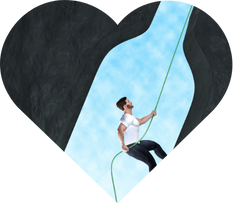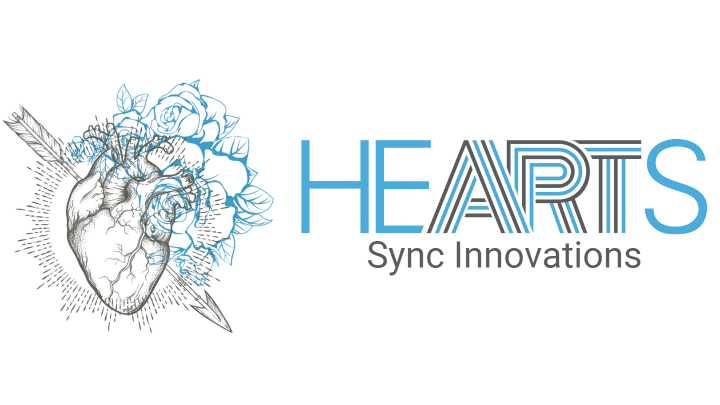The common misconception is: addiction is purely a weakness of will. Those who are strong enough simply quit. Research contradicts this. Emotional experiences – especially early neglect – profoundly alter stress systems, attention, and reward processing, making certain stimuli act like a short circuit: they ignite craving before the mind even kicks in [1] [2].
Addiction is not a single behavior, but a neuropsychological pattern: persistent desire, loss of control, and continuation despite harm. Emotional triggers are situations, memories, or feelings that initiate automated response chains – such as tension, emptiness, or social rejection. Chronic emotional neglect emotional neglectprolonged lack of attention, resonance, and protection from caregivers leaves marks on the hypothalamic-pituitary-adrenal axisstress regulation system that controls hormones such as cortisol and in functions like reflective functioningthe ability to accurately perceive and interpret one's own and others' emotions and motives. When these systems respond in an overstimulated or flattened manner, the brain often resorts to quick regulators – substances, food, screen dopamine – to dampen discomfort. For high performers, this means: high demands, plus unresolved emotions, create a perfect breeding ground for compensatory habits.
Those who experience early emotional neglect often exhibit a paradoxical stress pattern: high baseline tension and hormones but a flattened response to new stressors. This increases impulsivity and weakens the ability to consciously recalibrate in response to triggers [1]. In the realm of eating, a second loop is added: deficits in reflective functioning make internal states difficult to read; eating takes on the role of a mood regulator. This leads to overeating and loss of control – driven by symptoms of food addiction that stabilize the pattern [2]. The result is performance-relevant: fluctuating energy, sleep disturbances, inflammation promotion, concentration breaks – all factors that undermine recovery, decision quality, and long-term health.
A laboratory-based investigation with abstinent heroin addicts demonstrates how early emotional neglect shapes the stress system: compared to controls, the affected individuals had higher baseline levels of anxiety, ACTH, and cortisol. When viewing neutral stimuli, their anxiety increased, while there was no hormonal response to negative material – likely because the baseline was already high. Crucially, perceived emotional neglect in childhood was associated with heightened reactivity, a diminished stress response, and greater addiction intensity [1]. This illustrates a mechanism that operates 24/7: a hyper-vigilant nervous system that over-interprets triggers and shifts into automatic coping via addiction. A second study with a large non-clinical sample linked emotional abuse and neglect to symptoms of food addiction. The key lay in deficits of reflective functioning: those who recognize their feelings and motives poorly are more prone to develop food addiction – and this precursor predicts overeating and lack of diet control [2]. This highlights a trainable lever: improving metacognitive emotional skills to interrupt the chain from trigger to automatism.
- Trigger Diary 2.0: Document for one week in three columns: triggers (situations/feelings), physical signals (heartbeat, tightness, restlessness), impulse/action. The goal is pattern recognition, not self-criticism. After 7 days, identify the top 3 triggers. Link each trigger to an alternative response (90-second breathing, 10-minute walk, 1 glass of water, 5-minute body scan). This substitution addresses the gap between stimulus and reaction, which is particularly small in cases of flattened stress response [1].
- 90–90 Rule for Stress: Twice a day, practice 90 seconds of coherent breathing (4 seconds in, 6 out) plus 90 seconds of body awareness. The goal: to lower baseline tension, allowing for genuine reactivity rather than overflow reaction. Indirectly, this has a stabilizing effect on the hypothalamic-pituitary-adrenal axis [1].
- Reflective Boost: Train reflective functioning daily: three times a day, precisely name what you are feeling (e.g., "irritated and exhausted") and what need underlies it (e.g., "relief"). Add the question: "What action serves me in 1 hour?" This mini-training strengthens emotional metacognition, which research indicates is the link to addiction patterns – particularly food addiction [2].
- Stimulus Poverty before Stimulus Control: Remove high triggers from your surroundings for 14 days (store ultra-processed snacks out of sight/out of reach, eliminate alcohol from the house, set time restrictions on social media apps). A calmer environment reduces spontaneous cravings until alternative routines are established [2].
- Micro-Wins for Dopaminergic Balance: Plan three short, intrinsic rewards daily (daylight walk, 5 minutes of music, 20 push-ups). The goal: regular, frequent, low dopamine spikes instead of rare, high surges from addictive substances. This smooths the reward curve and reduces stimulus hypersensitivity [1].
- Social Buffer: Arrange a "check-in" message with someone you trust before known risk situations (being alone at night, after stressful meetings). Social resonance compensates for experienced emotional emptiness and lowers the need for substitute rewards [1].
- Therapeutic Shortcut: When food/substance takes over emotional regulation: prioritize targeted work on reflective functioning (mentalization-based interventions) and on FA symptoms. This combination addresses the causal pathway to overeating and loss of control shown in the study [2].
Addictive behavior is often an intelligent but shortsighted response to old emotional deficits. When you recognize triggers, calm your baseline, and train reflective functioning, you shift from autopilot to conscious control. Start today: a 90–90 session, a trigger log, an environment reset.
This health article was created with AI support and is intended to help people access current scientific health knowledge. It contributes to the democratization of science – however, it does not replace professional medical advice and may present individual details in a simplified or slightly inaccurate manner due to AI-generated content. HEARTPORT and its affiliates assume no liability for the accuracy, completeness, or applicability of the information provided.












